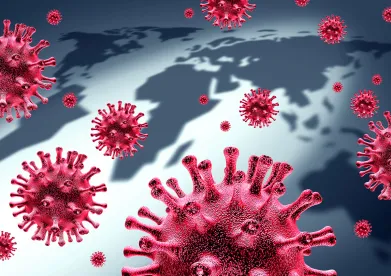On April 13, 2020, OSHA issued its Interim Enforcement Response Plan for Coronavirus Disease 2019 (COVID-19). Employers should pay close attention to this interim guidance because it includes important changes to enforcement guidelines and record-keeping requirements. High-risk employers in the medical and manufacturing sectors face especially important rule changes and enforcement risks. Employers in all sectors should make sure their written policies reflect OSHA’s most up-to-date changes.
Is my workplace at higher risk for an OSHA inspection during the COVID-19 pandemic?
-
Unless your workplace is in medical field, it is probably not at higher risk for an OSHA inspection. OSHA is prioritizing inspections based on high and very high workplace risk levels for COVID-19 exposure. Most workers will be considered to be in lower or medium exposure risk levels.
-
High and very high risk jobs include hospitals treating suspected and/or confirmed COVID-19 patients, nursing homes, emergency medical centers, emergency response facilities, settings where home care or hospice care are provided, settings that handle human remains, biomedical laboratories, including clinical laboratories, and medical transport.
-
Be prepared for eventual OSHA spot checks of random job sites for social distancing and PPE compliance (for example, Oregon is already doing this).
-
Update your written safety policies for COVID-19 considerations in the event of an OSHA inspection. When in doubt, get expert (medical and legal) help.
What happens if an employee sends a whistleblower complaint to OSHA?
-
Employers should be prepared for significant increase in whistleblower complaints. OSHA is seeing an uptick in complaints related to COVID-19 issues, including workplace crowding and improper PPE use.
-
Fatalities and imminent danger exposures related to COVID-19 will be prioritized for inspections, with particular attention given to healthcare organizations and first responders.
-
OSHA is often sending letters to employers asking them to address the complaint. Employers should coordinate their response with outside counsel and respond to these letters immediately with responses to the specific issues outlined in the OSHA letter. Failing to adequately respond to OSHA could trigger an inspection not just of the complaint at issue, but your entire facility.
-
Employer-reported hospitalizations will be handled using the rapid response investigation (RRI) in most cases.
How can I prepare for a OSHA inspections and enforcement actions during COVID-19?
-
Opening inspection conferences and employee interviews may be held by phone.
-
OSHA field officers may use their judgment to determine the scope of the inspection based on the alleged violation, but have the right to inspect the entire facility.
-
Employers may try to narrow the scope of the inspection to the specific complaint (for example, if OSHA has concerns about physical distancing in a particular area of the facility, the inspection should just be focused on that part of the facility).
-
Violations of OSHA standards cited under the inspection guidance in this memorandum will normally be classified as “serious” violations.
-
OSHA now has wider discretion to enforce certain rules, particularly related to the Respiratory Protection Standard (29 CFR 1910.134). OSHA will assess whether the employer is making a “good-faith effort” to provide and ensure that workers use the most appropriate respiratory protection available. Documentation of the distribution and training on protective equipment can be used as the foundation of an employers’ good faith efforts.
NEW: What are my record-keeping requirements related to possible COVID-19 cases?
-
OSHA has suspended injury and fatality reporting requirements related to COVID-19 for employers outside of the healthcare industry unless there is “objective evidence” that the COVID-19 related injury or fatality is work-related and the evidence was “reasonably available” to the employer.
-
Objective evidence would include a “cluster” of cases that emerge among workers in close proximity without an alternative explanation.
-
For employers, this new policy will help them focus their response efforts on implementing good hygiene practices in their workplaces, and otherwise mitigating COVID-19’s effects, rather than on making difficult work-relatedness decisions in circumstances where there is community transmission.
-
Outside counsel can assist employers in determining whether there is “objective evidence” of a COVID-19 related injury or fatality and ensure that employers are correctly reporting to OSHA.
Employers can review the full OSHA interim guidance here.






 />i
/>i

